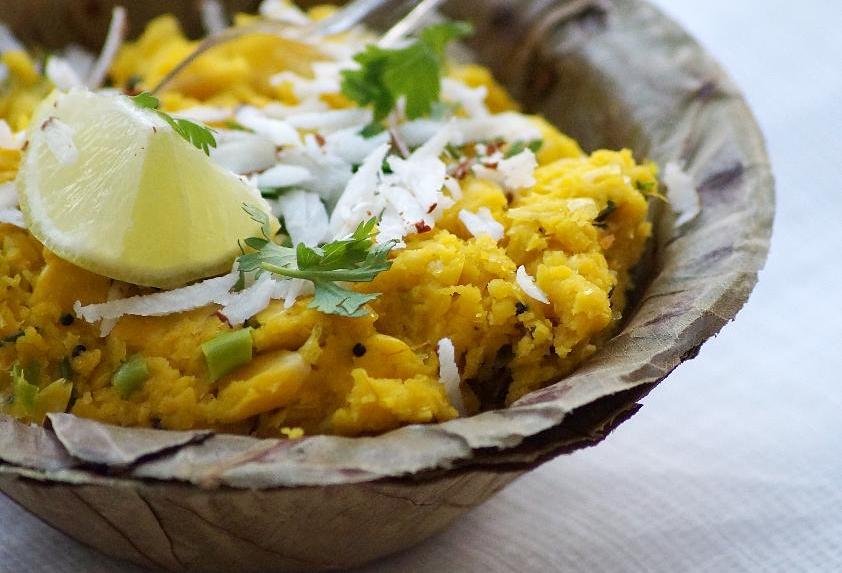Bhutte ka Kees, a Monsoon Favourite from the Streets of Indore

Richa Chitgopekar shares her recipe for bhutte ka kees, a monsoon favourite from Indore, made with indigenous varieties of corn, seasoned with chillies, and topped with coconut.
Growing up, I had no idea that each city had its own food culture. I simply assumed that whenever the God Indra lit the skies with thunder and lightning, humankind’s universal Pavlovian response was to eat Bhutte ka Kees.
"Run out and get me bhutta, if you want to eat bhutte ka kees!" my mother would call out, when she heard the old man selling corn on his bicycle go by our street in the monsoon rains. “And remember to check it properly!” Which meant piercing each stick of corn gently, to check for the sweet milk within. My mother would check them again, and the ones that didn’t make the cut would be set aside for roasting.
Storing corn in the fridge was a big no-no; kees had to be made the very same day. Our cook would take a big paraat and begin grating. By the time she’d finished grating all 3 kilos, there would be a glass of corn milk in the paraat, along with kees. This was the second test of freshness. The more the milk, the fresher the corn.
Making bhutta ka kees is fairly simple: Temper the kees, or grated corn, and let it cook down. The kees is then topped with lemon, coriander, grated coconut and Jeeravan (a spice mix used to season everything Indori, from poha, to garaadu, and of course, bhutte ka kees).
I live in Mumbai now and the indigenous varieties of white corn are not easily available. I have found comfort in tweaking my mom’s recipe to suit the sweetcorn that is commonly available, adding semolina and milk. Sweetcorn can be a little fibrous, and has very little ‘milk’ of its own, so to coax out texture, we add rava, and a bit of milk of water for creaminess.
Recipe for Bhutte ka Kees
Ingredients
3 fresh sweet corns, shelled
1/3 cup roasted semolina
2-3 cup of half and half, milk and water
2 tbsp oil
Asafoetida, a generous pinch
½ tsp mustard seeds
3-4 mild green chillies
Salt, to taste
For Garnish
Fresh Coriander
Dry, grated coconut
Lemon wedges
Jeeravan, a spice mix common to MP and Rajasthan. If unavailable, use a mix of chaat masala, red chilli, and jeera powder.
Method
Put the corn into a blender and blitz. Do not add water. It need not be made to fine paste; a coarse texture is fine.
Set the half and half to boil.
Heat oil in a large wok. Add asafoetida and mustard seeds.
When they splutter, add the chopped green chillies.
Add roasted semolina and fry for a minute. (This is not required if you are using the indigenous variety or corn).
Now, add the blended sweetcorn and fry for a minute.
Add the half and half. (This is added only because the urban sweetcorn variety has very little milk of its own).
Add salt, and allow to cook with a lid on for 15 minutes. The final consistency must be similar to upma.
Now, turn off the flame and keep closed for 10 minutes.
When serving, garnish with freshly chopped coriander, dry grated coconut and jeeravan.
Serve with a lemon wedge.
ALSO ON THE GOYA JOURNAL









